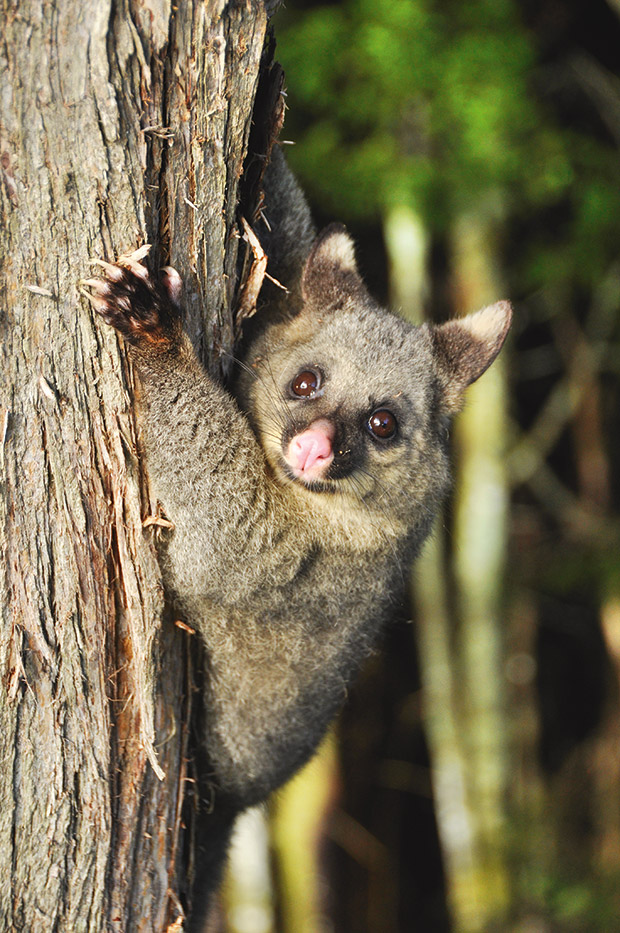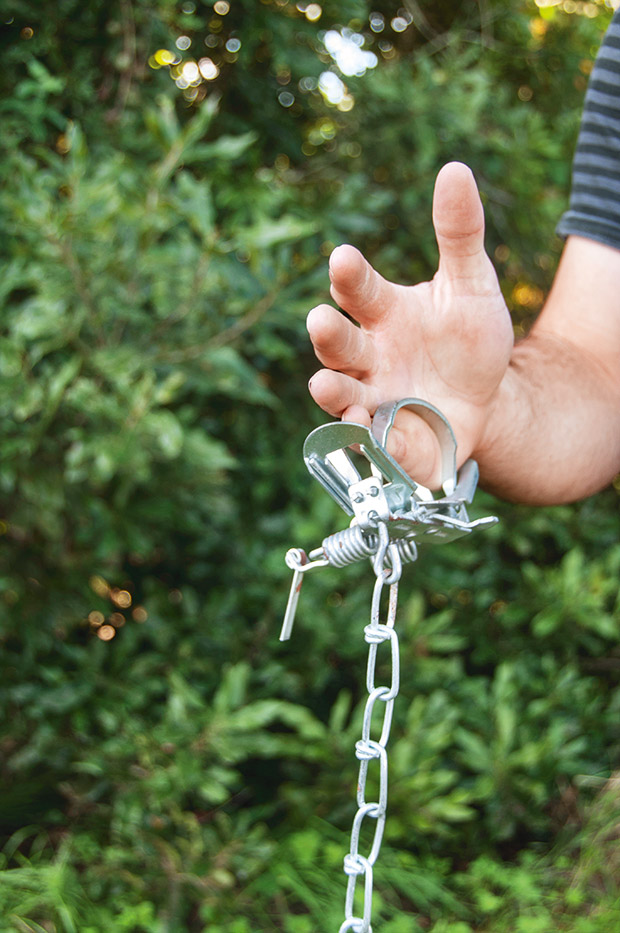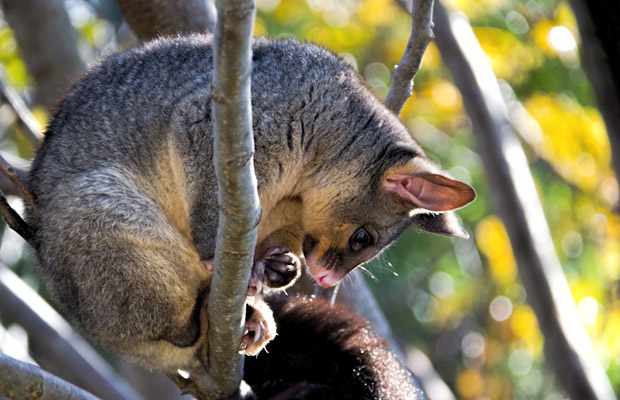8 things to know about possums (and how to catch one with a soft leg-hold trap)

Catching a live possum can reap a handsome reward.
Words & images: Sheryn Dean
Trappers use a soft leg-hold trap to catch possums. They are quite gentle, as trapper Blake O’Laughlin demonstrates in the photo below by ‘trapping’ his hand in one. The trap holds the possum, which usually curls up and goes to sleep once it realises it can’t escape.
Soft leg-hold traps are a lot easier to handle and set, and have a higher catch rate than kill traps. The bonus is non-target animals can be released unharmed.
It’s important to trap possums live as it’s much easier to pluck the fur from a freshly killed one than one that’s dead and cold.
Traps are stapled to the base of trees. A lure is painted on the trunk a hammer’s length above it to encourage the curious possum to stretch up and sniff it, tripping the trap.

Lures are usually a mix of icing sugar, flour, and a scent such as cinnamon, aniseed or eucalyptus, which are alternated, so it remains enticing.
After a humane, strategic hammer-blow to the head, the fur is plucked by hand in the 3-5 minutes after death when it’s easiest to remove.
The best season for harvesting fur is March to November when a possum’s naturally thicker, longer coat attracts a premium price. Summer is good for hunters thanks to warmer weather and more daylight hours. Trappers say it only takes a few extra possums to make up the extra value.

Possums come out in the early evening and will visit a ‘feed’ tree or a ‘play’ tree. They tend to be sociable, moving in family groups, travelling up to 2km a night. Possums are wise enough to eat at night and sleep during the day.
They tend to live in high numbers where forests meet pasture, taking advantage of the higher food quality. If you look carefully, you can see their tracks through the grass.
They’re unpredictable creatures, says Blake. Some nights he will have a low strike rate; a couple of nights later the same traps in the same area will catch prolific numbers. Eventually, the catch rate drops below an economic level.
Many trappers also do night shooting to get rid of unwanted turkeys, peacocks, goats, and other pests. The profits for a good trapper can be lucrative. Possum fur prices fluctuate, but returns are usually $100-$130 per kilogram (average, about $8 per possum), direct to the trapper. Out of the Wild pay a further $5 (average) for the carcass.
8 THINGS TO KNOW ABOUT POSSUMS
1. Possums were brought into New Zealand from 1831-1921 to create a fur industry.
2. Up until the 1940s, you needed a special license to catch them.
3. Possums were declared a pest in 1946.
4. The New Zealand Government spends over $110 million per year on controlling possums.
5. The NZ population is estimated to be around 30 million possums, as calculated by Landcare Research in 2009. Source: envirolink.govt.nz/assets/Envirolink/720-NLRC104-Possum-numbers-inNZ.pdf
6. In the 1980s, possum meat was sold as a delicacy in Taiwan, Hong Kong, and Malaysia, marketed as ‘kiwi bear’.
7. The rarest possum is the albino, reportedly occurring only once in every 10,000 possums. Anecdotal evidence from trappers is that only a handful have been found in NZ. If you can catch one and find a buyer, a live albino possum could sell for thousands of dollars.
8. The Australian brushtail possum is not an unwanted organism under the Biosecurity Act 1993, but bovine TB is, so many regional pest management plans (administered by regional councils) have rules preventing the keeping of possums as pets. Check with your local authority.
TESTING FOR TB IN NZ
Each year, pest control companies send glands from thousands of possums and other pests for TB testing.
The testing is overseen by OSPRI, a partnership between primary industries and the government. It manages the national TBfree programme (aiming to eradicate bovine TB), and the NAIT animal ID and traceability programme.
OSPRI works to control possum numbers in an area and then surveys it to confirm the disease has been successfully eradicated.
One of OSPRI’s current projects is looking at TB in ferrets. Depending on its results, it may lead OSPRI to undertake greater levels of ferret control if TB is found to persist after the eradication of possum populations.
Love this story? Subscribe now!
 This article first appeared in NZ Lifestyle Block Magazine.
This article first appeared in NZ Lifestyle Block Magazine.

